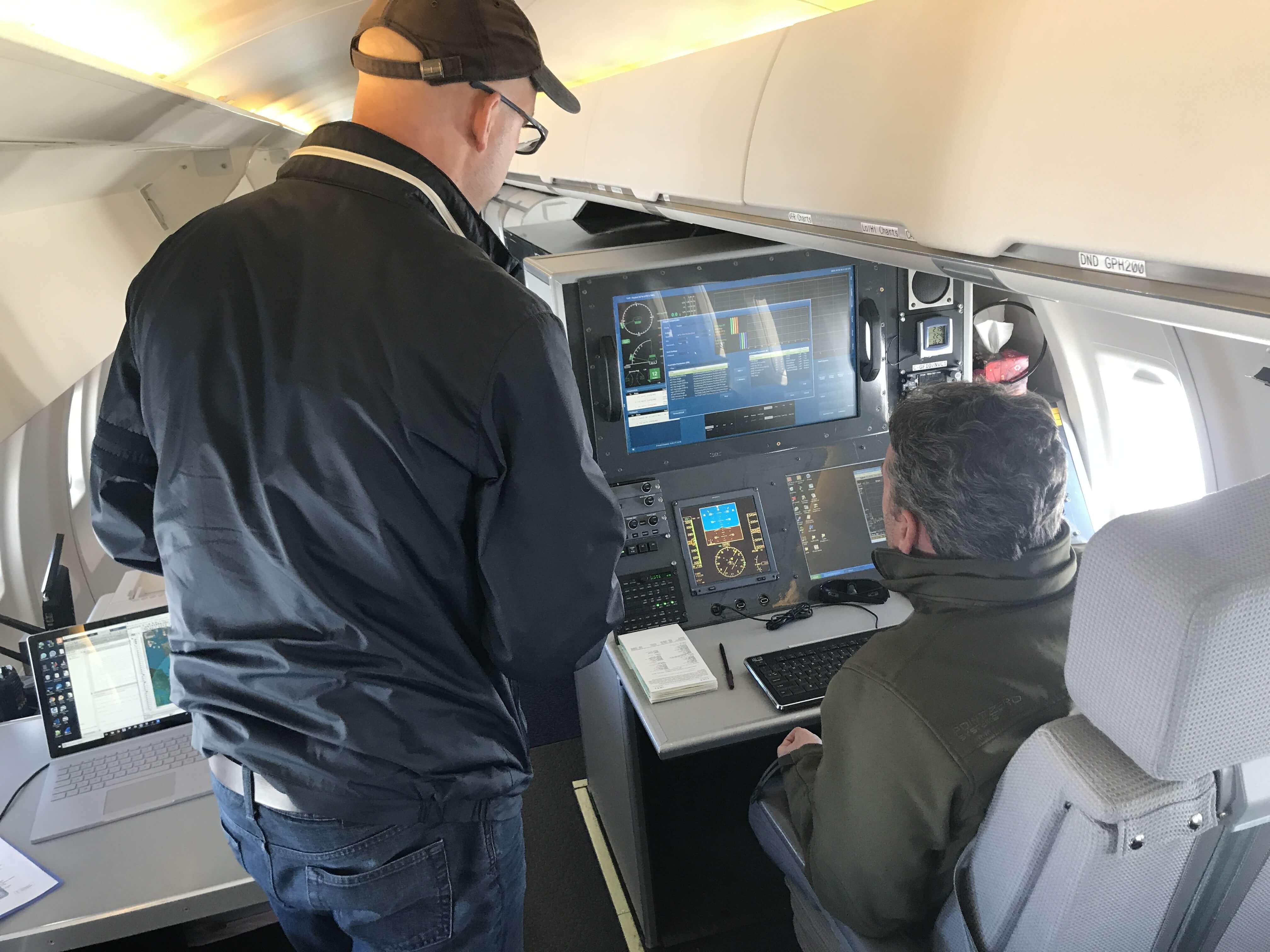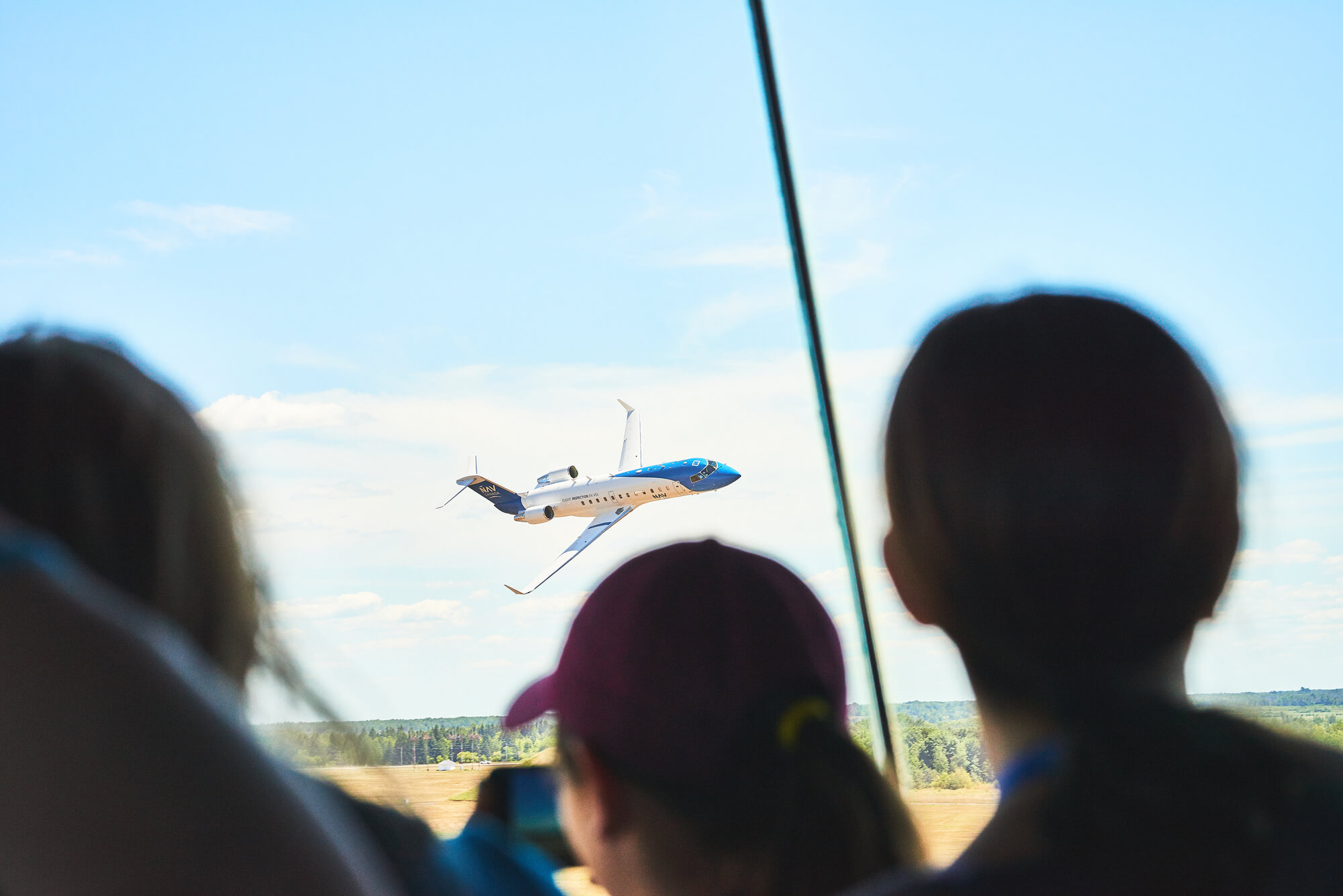







November 7, 2019
For most people, the sight of an aircraft descending and making numerous gear-up approaches to a runway is unusual and may suggest that the flight is in distress. But for NAV CANADA’s flight inspection crew, this is simply a routine operation that ensures the accuracy and safety of the country’s navigation aids and instrument approach procedures.
NAV CANADA currently operates two Bombardier CRJ-200 flight inspection aircrafts, and recently retired a Dash 8-100 from its fleet. There is no doubt that the unusual flight patterns of these planes attract a lot of attention, interest and concern. That’s understandable. If you see a plane making multiple low passes over a runway with its wheels up, one could easily assume that plane can’t land because of malfunctioning landing gear.
Our flight inspection aircraft are popular with plane spotters and self-described “avgeeks” from all over Canada. Many of them share the interesting looking flight track doodles that are captured on flight tracking apps.
These aircraft are crewed by specially trained pilots, technical flight inspectors (operating the onboard flight calibration instruments), and additional technical flight inspectors or technologists are working on the ground to adjust the navigation aids if issues are found. The aircraft are equipped with technology to measure, analyze and calibrate the electronic signals emanating from such navigation aids as instrument landing systems (ILS), VHF omnidirectional range (VOR) and non-directional beacons (NDBs) at more than 130 airports. The aircraft also flight check all instrument approach procedures based on global navigation satellite systems (GNSS).

An ILS is a precision approach system that provides navigational guidance signals and information on a cockpit display to guide pilots accurately to the point of landing in periods of reduced visibility. This information is especially necessary in inclement weather with low ceilings, snow, fog or rain, when pilots have poor visibility. The ILS data transmitted to the cockpit provides lateral and vertical guidance.
A typical test at an airport could take anywhere from thirty minutes to two hours and consist of the pilots making repeated approaches on a runway at varying combinations of height, speed and direction. Each approach tests the ILS signal in a different way and it is up to the technologist in the back to inform the pilot of what type of approach is required next or any maneuver that requires repetition.
Your cell phone’s GPS may be precise enough to guide you around town, but the flight inspection crew is able to test and calibrate an airport’s ILS using precise differential GPS that is accurate to within centimetres! The pilots’ knowledge of approach procedures and requirements allows them to properly evaluate current procedures and best practices for a particular airport.
VORs, while being replaced with GNSS navigation, continue to provide highways in the sky for older aircraft navigating across the country. Each ILS and VOR in Canada receives two annual inspections to ensure the accuracy and integrity of the signal. If a navigation aid experiences a failure or requires repair, it must be inspected again prior to being returned to service.
On any given day, both flight inspection aircraft are airborne and operational for eight to 12 hours at a time. Depending on the complexity of the task, each aircraft could complete up to 10 different daily inspections. The flight inspection aircraft and crew operate out of two bases, Kelowna, B.C., and Ottawa, with a series of tasks strung together into a four-to-six-day mission.
A typical day will see the aircraft depart one airport, fly one to two hours of inspection, land, pick up the ground crew and travel to the next airport, possibly inspecting airways, air routes or enroute navigation aids along the way. The process is repeated until the crew duty day limit, weather, or high traffic volumes end the day.
A team of dispatchers and planners at the Ottawa base keeps a close eye on the weather, operational restrictions and ATC requirements to shift the aircraft and crew around the country as required, keeping the operation moving as efficiently as possible and ensure our operations have minimal impact to our customers and stakeholders.
One of our pilots summed up the job well: “The flying is unique, challenging, and requires a lot of teamwork. For me, the best part of the job is the low-level operations and being able to put the CRJ into manoeuvres that most pilots never get to do.”

The next time you see a blue and white plane banking hard, going in circles, swiftly changing altitudes and approaching the runway without landing, don’t be alarmed. It’s just NAV CANADA’s flight operations team making sure our navigation aids are accurate and safe. Take a photo or screen shot the flight tracks and tag us on social media with #NAVCANADAFIAOpen a new window.